Serger Vs. Sewing Machine -9 Powerful Differences
If you’re a newcomer to the sewing world, the abundance of sewing machines available in the market might be overwhelming.
Even experienced sewers can find the variety of models confusing, causing hesitation when considering specialized machines.
Take, for instance, the choice of using or buying a serger vs. sewing machine, today we are breaking down the differences for you.
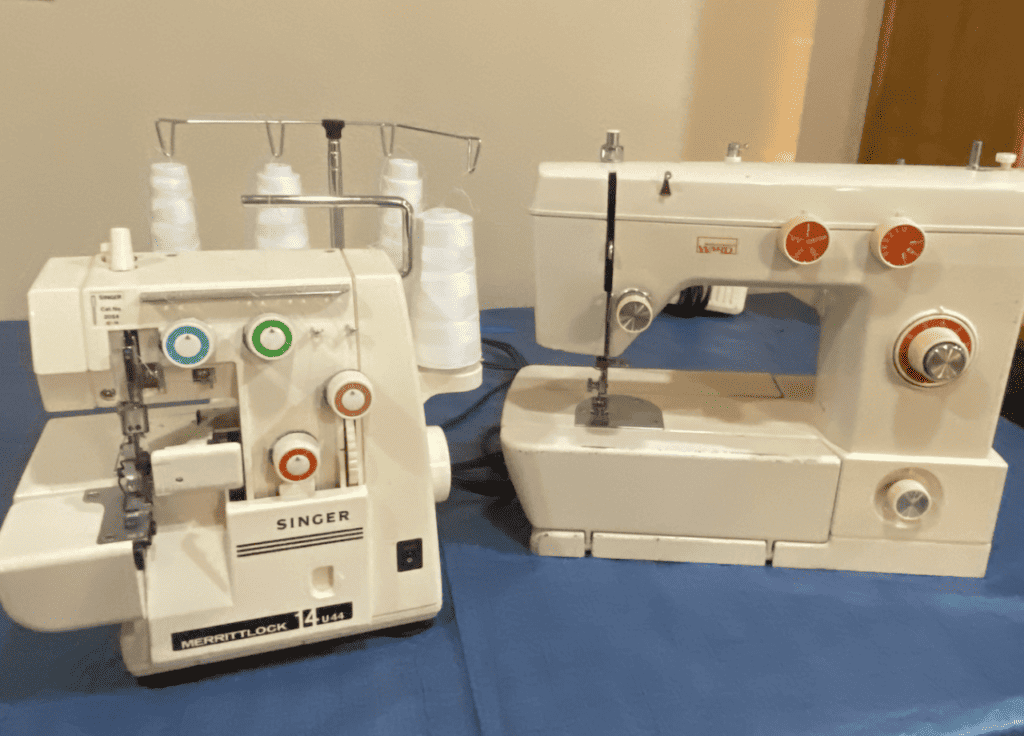
A serger is a specialized sewing machine with unique functions. The primary difference between a serger and a regular sewing machine lies in the serger’s ability to simultaneously sew a seam, cut off the seam allowance, and enclose the raw edge using a chain stitch, all in one step.
It’s used in garments all the time. Grab your favorite T-shirt or a pair of pants, and you will see an enclosed seam with no raw edges that was created by a Serger machine.
If you need a new sewing machine, here are the best beginner sewing machines for beginners.
Table of Contents
What Is A Serger?
A serger, also known as an overlock machine, performs a dual function by sewing a seam shut and simultaneously stitching over the edge of the seam allowance, resulting in a fully encased seam.
Additionally, many sergers trim the excess seam allowance as they sew, delivering impeccably finished seams with factory-level precision.
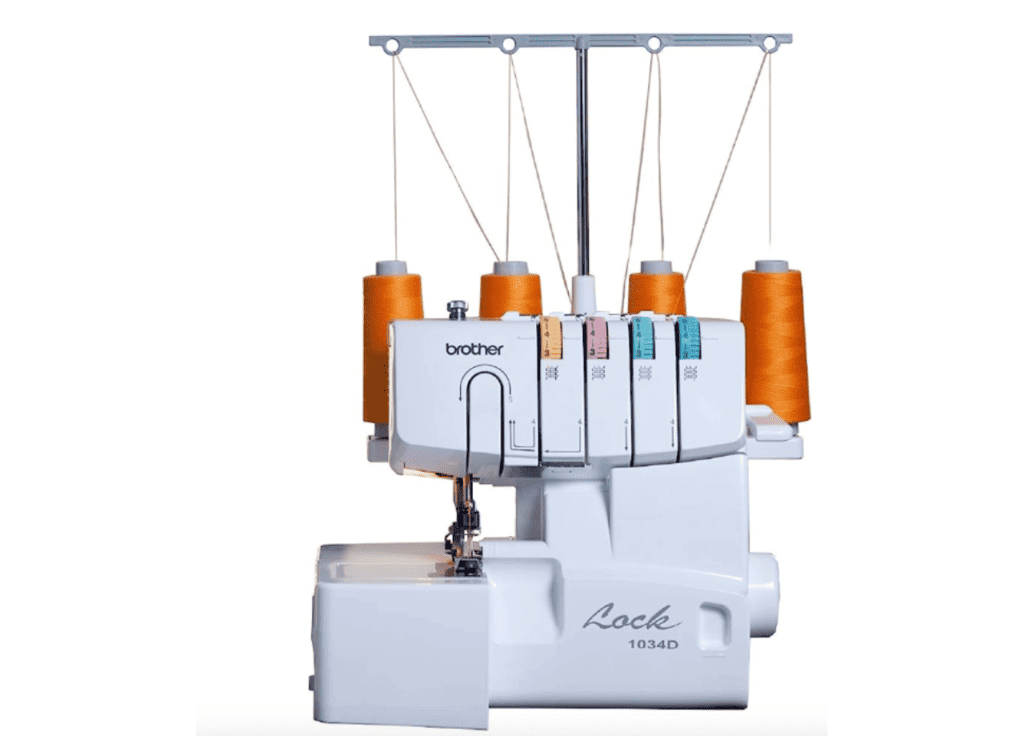
These machines are often referred to as overlock machines due to the over-the-edge stitch they employ, which is known as the overlock stitch.
In the United States, they are commonly called sergers, while in Europe, they are referred to as overlockers or overlock machines.
A distinctive feature of sergers is their ability to use multiple spools of thread simultaneously. Depending on the model, these machines can utilize two to five cones of thread while sewing.
To accommodate this feature, sergers typically employ large, triangular-shaped thread cones commonly found in sewing stores although I love these cones of thread from Amazon. This abundance of thread is essential for creating the overlock stitching.
Polyester thread is the most commonly used type of thread for sergers. Its properties, such as a slight stretch and excellent strength, make it ideal for handling the high-speed and precise sewing demands of these machines.
Matching the perfect thread shade with your fabric is likely a delightful aspect of many sewing projects. But there is a difference between Serger vs. Sewing Machine.
However, when it comes to using a serger, this habit might need to be reconsidered by some. Many experienced sewers opt not to match serger thread to the fabric color because the large thread cones come at a significant cost.
Moreover, rethreading these machines can be a bit labor-intensive, so constantly swapping out spools for each project can become cumbersome.
One of the advantages of using multiple threads in sergers is the array of overlock stitches it offers.
While a regular sewing machine produces a single row of straight stitches when sewing a seam, a serger combines those straight stitches with a pattern of stitches over the raw edge of the seam allowance, achieving a neat and finished look.
Another notable feature found in many sergers is the differential feed. This functionality allows the feed dogs in the machine to move at varying speeds simultaneously.
Consequently, it can produce charming ruffles and facilitate the smooth sewing of knit fabrics without causing them to stretch excessively. Just 1 difference between Serger vs. Sewing Machine
What Does a Serger Do?
Sure, let me explain how a serger works! Unlike traditional sewing machines that use bobbins, sergers operate differently.
They don’t rely on bobbins; instead, they form thread loops and utilize stitch fingers, which are small metal prongs located beside the needle plate, to secure the threads over the fabric’s edge as they sew. A definite difference between Serger vs. Sewing Machine.
Though serger models may vary, they all have the capability to create an overcast or overlock seam. This stitch is particularly useful for making a narrow hem.
Additionally, most sergers can produce flatlock seams and achieve a flawless cover stitch, making them versatile machines for various sewing projects. A big difference between Serger vs. Sewing Machine.
How Does a Sewing Machine Work?
In the simplest terms, a traditional sewing machine stitches fabric layers together using thread. Domestic machines can perform basic stitches like straight and zigzag, as well as more intricate ones like buttonholes and decorative patterns.
This is a big difference between Serger vs. Sewing Machine as a serger can’t do different stitches.
You can use a regular sewing machine for various tasks, including sewing seams, hemming, inserting zippers, creating buttonholes, and even stitching embroidery designs.
Modern sewing machines are typically computerized, offering a wide range of pre-programmed stitching patterns.
Despite this advancement, the fundamental mechanics have remained largely unchanged since the first sewing machines were invented during the industrial revolution.
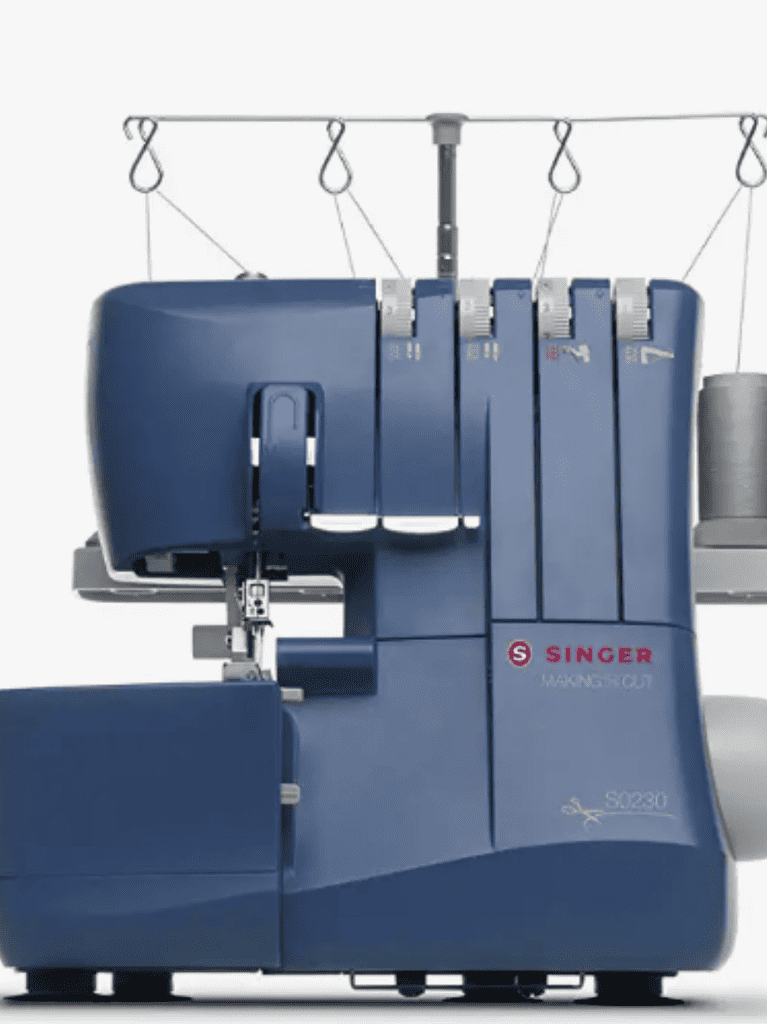
Here’s how it works: The needle pulls thread from the spool and passes it in and out of the fabric as the machine operates.
Simultaneously, the bobbin, which holds a tiny spool of thread beneath the needle, uses a special hook to catch the upper thread and interweave it with the bobbin thread, securing the stitches on both sides of the fabric.
More complex stitches and features, such as double needle settings, add some complexity, but the basic concept of how the needle and bobbin work together remains at the core of even the most advanced machines.
Serger Vs. Sewing Machine
The primary distinction between a Serger Vs. Sewing machine lies in the way they handle seams. Sergers utilize an overlock stitch to fully encase the seam as they sew.
This makes sergers more specialized and complex machines and limited in certain aspects compared to most sewing machines.
However, sergers offer the advantage of accomplishing multiple tasks simultaneously that you would typically have to do one at a time when using a regular sewing machine.
Sewing Thread
A notable distinction in the design of these machines is that sergers typically feature a rack of tall thread cones on top.
In contrast, most sewing machines operate with a single spool of thread and one bobbin. Sergers, on the other hand, make use of three to five cones of thread and rely on looper threads instead of a bobbin.
This is a big difference between serger vs. sewing machine.
Sewing Machine Throat
In general, sergers have a more compact and squared design compared to a regular machine, which typically have a longer neck.
The reason for this difference is that sewing machines need additional space for tasks like sewing in zippers, where maneuverability is crucial, while sergers are primarily designed for efficiently sewing seams.
A definite difference between Serger Vs. Sewing Machine.
Serger Thread
As you are well aware, a crucial distinction between these machines lies in the number of threads they utilize.
Sewing machines operate with one spool of thread and one bobbin to create stitches (unless using a double-needle, which still only requires two spools of thread).
On the other hand, sergers employ two to five cones of thread simultaneously to craft finished seams that resist fraying the edge of the fabric. It’s especially great for stretchy fabrics like knit fabric. A definite difference between Serger vs. Sewing machine
Serger Cutting Blades
Sergers offer unique features that are absent in average sewing machines, including a cutting tool to trim the seam allowance. This enables them to create a flawless finish while simultaneously sewing the seam. A big difference between Serger Vs. Sewing machine.
On a regular sewing machine, you can achieve a similar result using a zigzag stitch, but it requires completing the process in stages: first, sewing the seam, then removing the fabric from the machine to trim the seam allowance, and finally, setting the machine to a zigzag stitch to finish the seam.
In contrast, the key difference is that sergers can accomplish all of these steps in one go, thanks to their built-in cutting tool creating a more professional finish.
Sewing Machine Stitches
Modern sewing machines often come equipped with a wide array of pre-programmed stitches, numbering in dozens. There are a ton of different types of stitches on the standard sewing machine.
From straight stitch to zigzag and more, stitches are a huge difference between serger vs. sewing machine.

In contrast, sergers typically offer a more limited selection of stitches. However, these stitches are versatile and can be used for various tasks.
Despite the serger’s limitations in stitch variety, a basic sewing machine can perform many distinct tasks that overlocking machines cannot achieve.
The sewing machine’s versatility allows it to handle a diverse range of projects and stitch types beyond the capabilities of a serger which is a big difference between Serger Vs. Sewing machine.
Threading a Sewing Machine
Threading a regular sewing machine becomes manageable with some practice. However, you may find a Serger sewing machine a bit more challenging to thread due to the need to learn the thread path for three to five different threads instead of just one.
For beginners, it’s highly recommended to consult the owner’s manual and watch instructional YouTube videos to gain a better understanding of the threading process.
Many of the manufactures , like Singer and Brother, have videos for their specific models and you can find one here.
Once you become familiar with the process, setting up your serger will become effortless and straightforward. Practice and guidance will make threading a serger a breeze in no time!
Threading the machines is a big difference between Serger Vs. Sewing machine.
Sewing Machine Stitches Per Minute
The stitching speed varies slightly for each sewing machine and serger, but typically, sergers can sew far more stitches per minute than the average sewing machine.
While sewing machines typically stitch between 1000 and 1500 stitches per minute, sergers surpass this with an average range of 1300 to 2200 stitches per minute! A big difference between Serger vs. Sewing machine.
Learning To Use a Sewing Machine
Understanding sergers may pose a greater challenge compared to regular sewing machines.
If you’re like many home sewers, you probably started with a regular domestic sewing machine, learning basic skills like sewing straight seams, hemming garments, and adding zippers. As you progress, you might decide to elevate your sewing projects and achieve professional-looking finished seams, prompting you to invest in a serger.
Are sergers more difficult to use than sewing machines? Not necessarily, but for most sewers, the transition to sergers occurs after becoming familiar with regular sewing machines. Sergers operate differently, which can be perplexing for those accustomed to working on sewing machines.
The good news is that sergers have fewer functionalities compared to most sewing machines. Once you master these specific skills, you’re well-prepared to use a serger effectively!
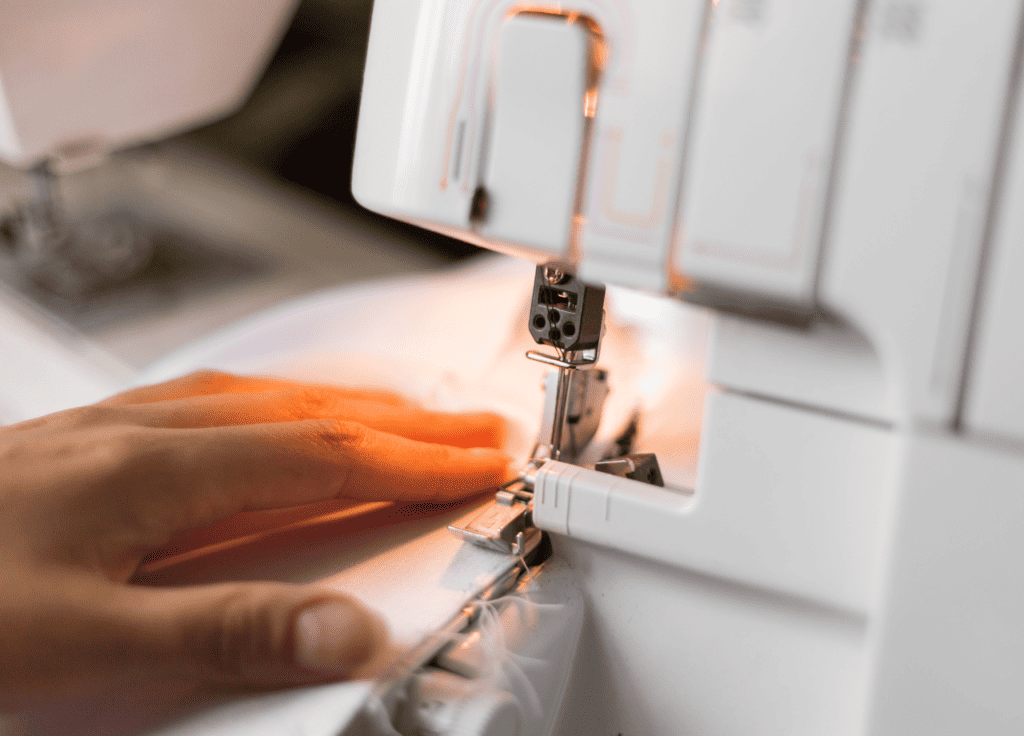
Sewing Machine Prices
Sergers and sewing machines fall within comparable price ranges. A new basic serger can be bought for around $300, while super-advanced models can go up to $2,000!
Similarly, decent domestic sewing machines are typically priced at around $200 to $300. However, you can also find expensive sewing machines equipped with a vast selection of stitches, reaching prices of a couple of thousand dollars. The most expensive sewing machines are often computerized embroidery machines, but that is an entirely different category altogether!
Do I Need a Serger?
The necessity of owning a serger depends on the type of sewing you prefer. For many simple sewing tasks, a serger can make them easier and more efficient.
If you sew professionally and desire a more polished look for the edge of your fabric, overlocked seams achieved with a serger can provide that professional touch.
To determine if buying a serger is worth it, consider your sewing habits. If you sew regularly or plan to run a home-based Etsy shop, investing in an overlocking machine would be beneficial.
Similarly, if you create items that need to endure tough wear and tear, like sports jerseys or children’s clothes, a serger’s sturdy overlocked seams can extend their lifespan.
However, if you sew occasionally, mainly for yourself or your family, a serger might end up being an expensive decoration in your craft room.
It’s important to note that a serger cannot replace your sewing machine entirely, as it lacks some capabilities required for everyday sewing. If you have limited space or budget for only one machine, a sewing machine would likely be a more practical choice.
For those who desire the best of both worlds, owning both a sewing machine and a serger can be ideal. Alternatively, you could explore combo machines if you want a more sophisticated option.
Best Serger?
The ideal serger for you depends on your specific sewing needs. If you are a beginner, a three-to-four-thread model with color-coded threading instructions might suit you best.
For seasoned sewing pros, a four-to-five spool machine with multiple stitch options and higher stitches per minute would be more appealing.
There are various places where you can find sergers for sale. If you prefer a new machine with a warranty, consider purchasing directly from the manufacturer, searching on Amazon, or visiting sewing stores like Joann Fabric.
If you are looking for a more affordable option but with less guarantee, you can explore eBay and Craigslist for a range of sewing machines.
Before making a decision, it’s essential to research thoroughly to understand the capabilities and limitations of each serger model.
Even if you come across a serger at a local thrift store, you can still look up the model on Amazon to gather information about its functions, limitations, and ease of use before making a commitment. This way, you can find the serger that perfectly suits your needs.
Best Serger Sewing Machine
If you’re just beginning to explore sergers, opting for a budget-friendly model would be a wise choice. Look for a serger that uses fewer threads and provides clear, color-coded instructions to simplify the learning process.
Sticking with reputable brands like Brother and Singer might be a preferable option for you. Both companies offer excellent serger machines suitable for beginners.
To give you an idea of what’s available, here are a couple of beginner-friendly serger models:
Brother Serger
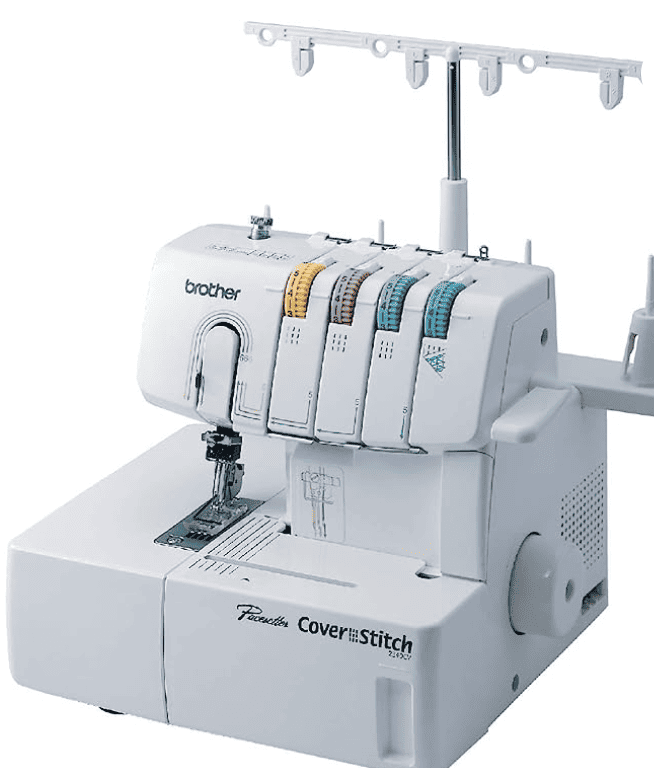
Product Description:
The Brother serger is a sturdy serger designed with a durable metal frame and high-quality interior components, ensuring its longevity. Its underlooper threader adds to the convenience of use.
This serger delivers high performance, capable of handling multiple layers of heavyweight materials like denim with ease.
With a remarkable speed of 1,300 stitches per minute, you can complete your serging tasks efficiently and save time. The included foot pedal allows you to control the sewing speed to match your preference.
Threading the machine is made hassle-free with the easy-to-use color-coded upper thread guide and lower looper threading system, aided by the comprehensive instruction manual.
Additionally, the Brother serger comes with three snap-on accessory feet, including standard, gathering, and blind stitch feet, expanding its versatility for various sewing projects.
Singer Serger S0100
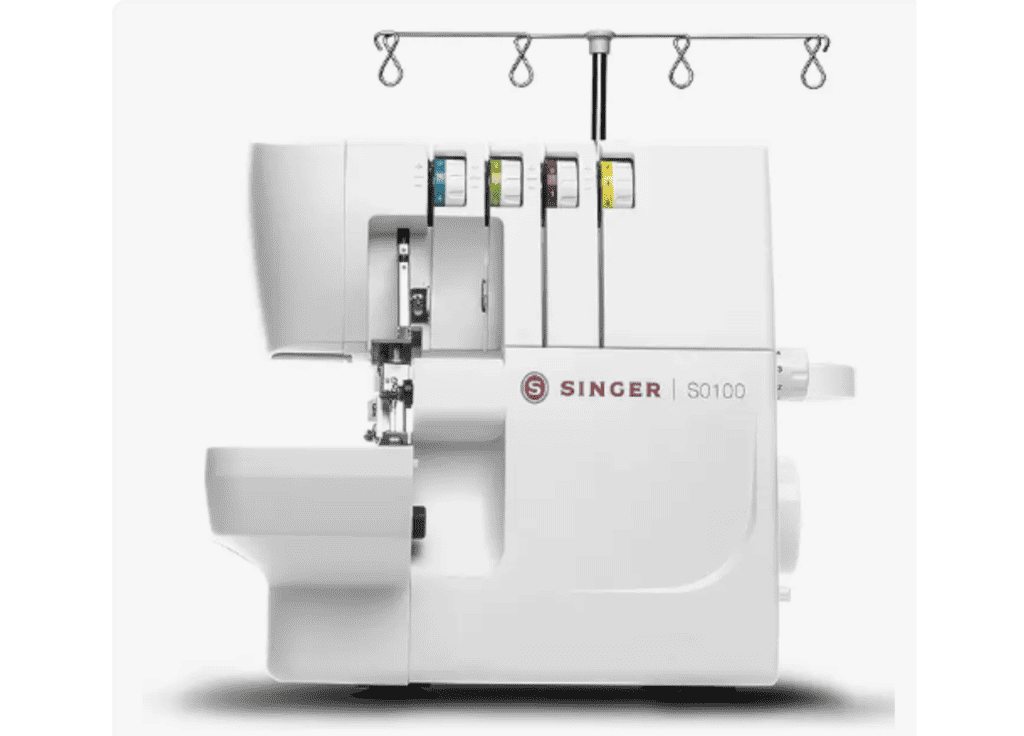
This serger comes with a Lower Looper LED Light that enhances visibility, making threading easier and more convenient.
With a capacity for 2, 3, and 4 stitches per thread, this serger adapts to meet your specific sewing needs.
Enjoy the flexibility of 6 different stitch types, ensuring you achieve the perfect stitch for any project.
Sewing at an impressive speed of up to 1300 stitches per minute, this machine delivers professional-level speed for quicker results.
For added versatility, it features a handy Free Arm, which allows you to remove the accessory compartment for overlocking cuffs, pant hems, and other circular seams.
Accessories can be conveniently stored in the top of the box or in the accessory tray provided on the machine.
When it comes to Serger vs. sewing machine, we hope that you have seen the main difference which is how the seams look on the fabric edges. They both have a different type of stitch with a cover stitch machine creating more professional seams.
A normal sewing machine has more versatility when it comes to sewing layers of fabric or edges of fabric while an overlocking stitch is great for rolled hem or when you don’t want the edge of the fabric to fray.
If you have questions, don’t hesitate to ask by email or in the comments below. I own both a sewing machine and a Serger and use both all the time.
Fabric Giveaway
Enter our monthly fabric giveaway. Simply complete the tasks daily and you will be entered into the drawing. Winner will be randomly drawn on the first day of the month and notified via email
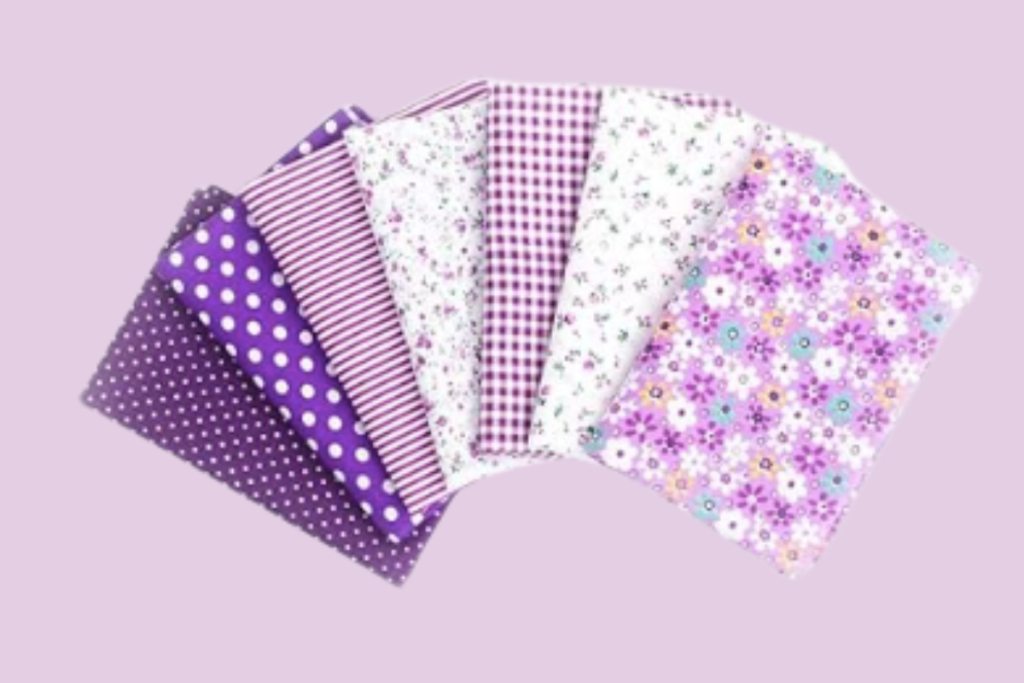

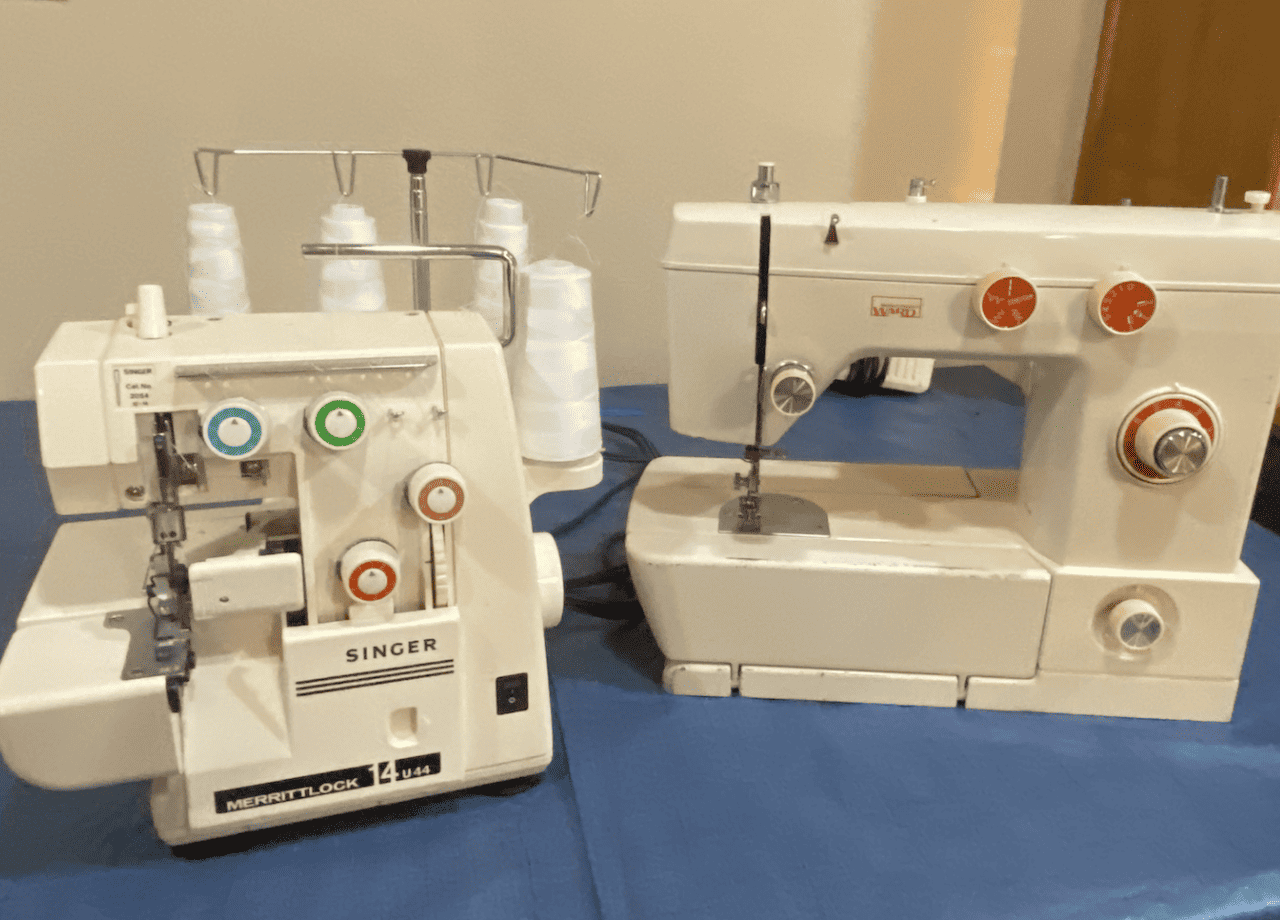
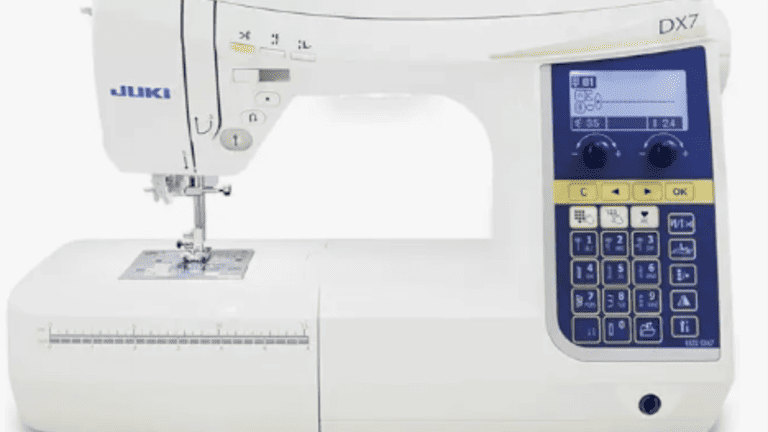
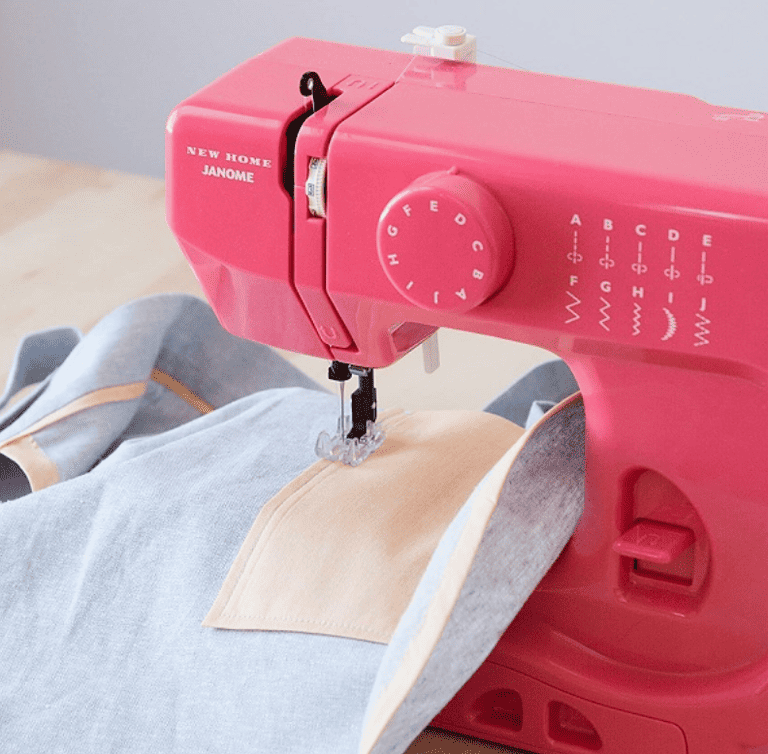

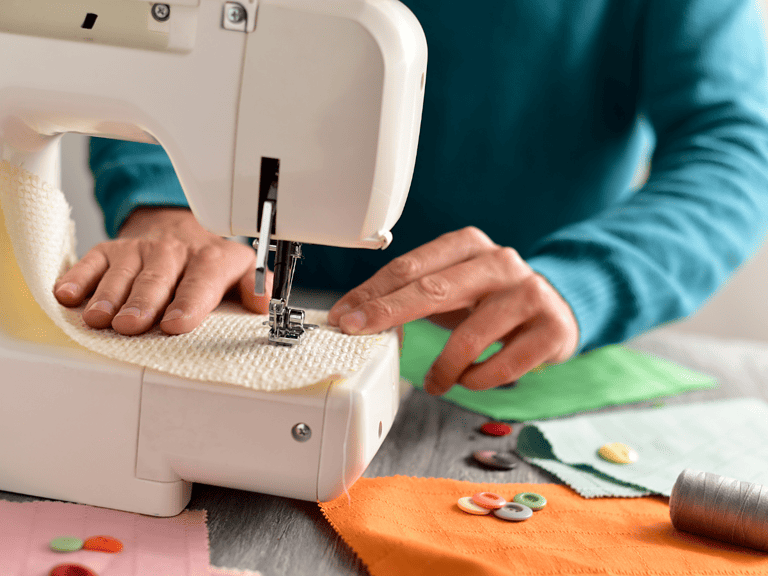
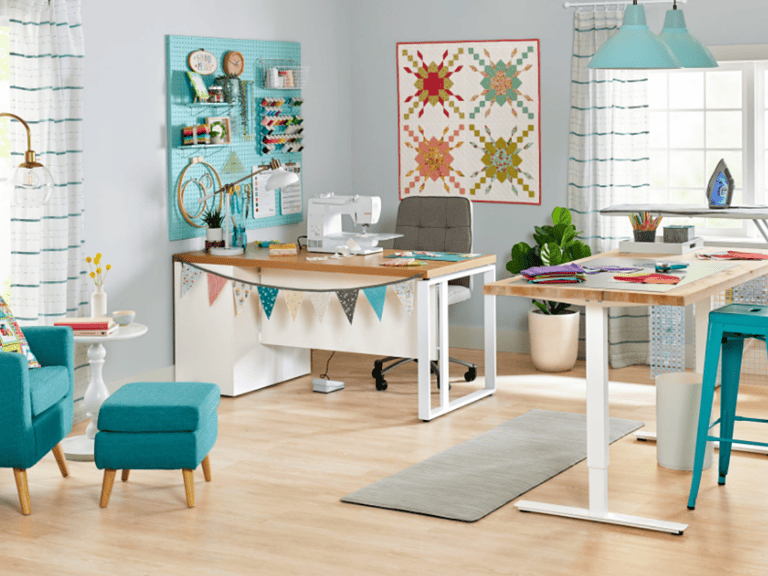
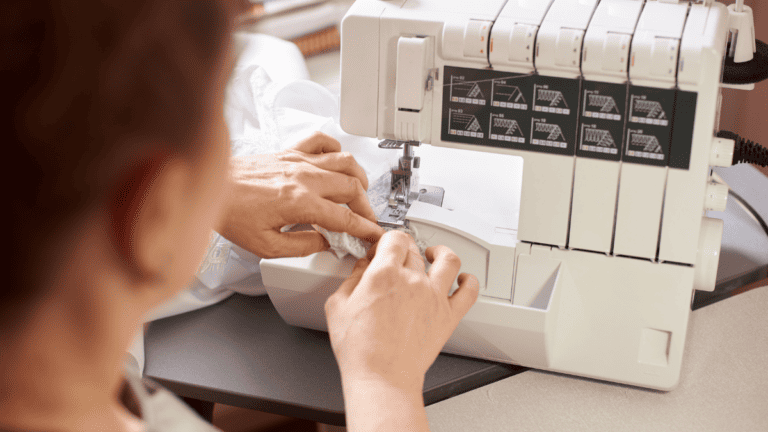
2 Comments